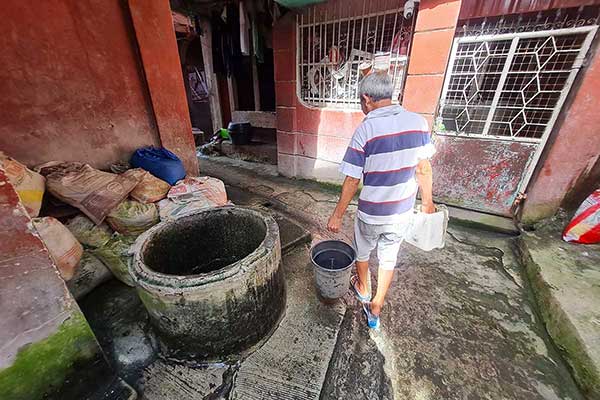
By Joseph Bernard A. Marzan
The Iloilo City government is on alert as numerous shallow wells in the city face depletion, amid the persisting extreme heat brought on by the El Niño phenomenon.
Neil Ravena, chief of the City Environment and Natural Resources Office (CENRO) and the General Services Office (GSO), told Aksyon Radyo Iloilo on Tuesday that shallow wells in the Muelle Loney village have run dry.
This depletion trend extends to other communal and private wells throughout the city.
“Based on our research, one regular shallow well has 200 liters, and an individual uses up to 30 liters per day for domestic use, and that will not be sufficient. They will have to wait for a number of hours before having [sufficient] water [supply] again,” Ravena said.
Three city departments – the GSO, CENRO, and City Disaster Risk Reduction Management Office (CDRRMO) – are currently validating the status of these shallow wells.
Ravena disclosed that the CENRO has widened its Climate and Disaster Risk Assessment (CDRA) survey to include 40 barangays, initially concentrating on 25 that are most vulnerable to the effects of El Niño or are experiencing acute water scarcity.
City officials monitoring the wells are advising the public to conserve water to prevent saltwater intrusion, a condition that could lead to lasting issues. Signs of such intrusion include the presence of sand, shells, and other atypical materials in treated water.
“Mostly, City Proper [barangays] are at a critical level, where their shallow wells [are having lowered water levels], and at the same time for coastal areas, we are advising them not to extract too much from their deep wells because there will be a possibility of saltwater intrusion in their area,” Ravena cautioned.
He warned that if saltwater intrusion occurs, the condition could be irreversible, leaving the affected area’s water perpetually saline.
The reliance on shallow wells is partly a response to the rationed water supply from Metro Pacific Iloilo Water (MPIW), the city’s main provider.
“There are areas in Arevalo, Molo, and Mandurriao, which are heavily dependent on shallow wells, so that’s where we are focusing, because based on our data, only 30 percent of the city is served by the MPIW,” he said.
He also mentioned that their CDRA findings are sufficient for declaring a state of calamity. The decision will be based on a report to be submitted to Mayor Jerry Treñas today, April 11.
To combat possible saltwater intrusion, Ravena mentioned expert recommendations to drill new wells in the Dungon and Sambag villages of Jaro district, with similar considerations for So-oc in Arevalo district and Navais in Mandurriao.
Last week, on April 5, Ravena stated that the CDRRM Council had opted against a calamity declaration, preferring to enhance risk management efforts instead.
However, on April 6, Mayor Treñas indicated he might still call for such a recommendation to enable emergency procurement of additional water supplies.




















